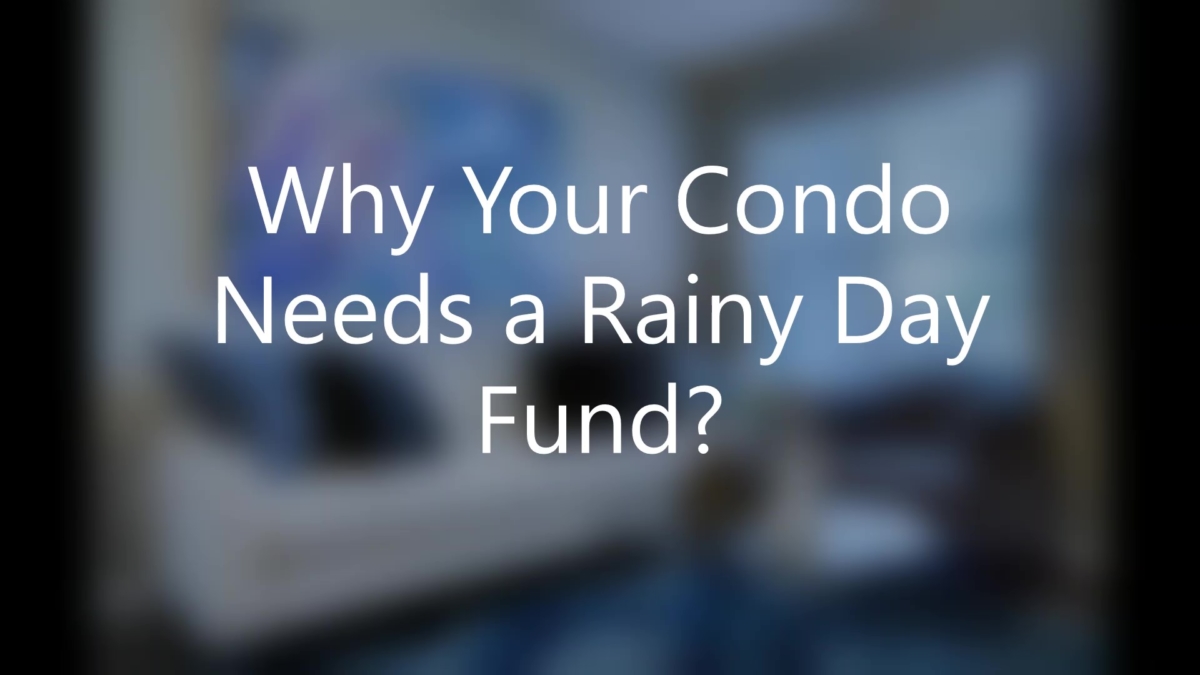If you’ve never owned a condo before, then you probably haven’t heard the term “sinking fund”. But should you decide to purchase a Phuket condo, you will no doubt learn the term, and as an owner will most likely become a contributor to this fund.
This article aims to give you an overview of sinking funds and their purpose.
So What is a Sinking Fund?
The term sinking fund, as it relates to property, is a reserve fund set up by the owners within a development, usually units of apartments or condominiums.
It is essentially a savings account, set aside for a rainy day. A sinking fund is typically only called upon in the case of emergency, or for any major repair work on the building structure, the pathways, borders, roofing, elevators or even the swimming pool.
Each owner contributes a one-time payment into the sinking fund, usually at the time of purchase. It is not paid to the developer, but rather to the management company or the Condominium Juristic Person (CJP).
Although the developer on new projects collects the sinking fund, the money is all handed over to the CJP when the resort is completed.
If there are any unsold units when the resort is finished, the developer is responsible for transferring further sinking fund monies to the CJP as these are gradually sold.
Why Is It Necessary?
The regular common area maintenance (CAM) fees are used for the day-to-day running costs of the resort, i.e. maintenance to the gardens, minor repairs, cleaning the swimming pool, and generally keeping the development clean.
Please see our article on the condominium common area and common area fees:
What is the Common Area and the Common Area Fee?
The sinking fund, on the other hand, is required when extraordinary expenses arise, which are outside the regular budgeted costs for the condo.
Some expenses are not planned, but they are also not large enough to require dipping into the sinking fund. For example, the cost of replacing a few tiles in the swimming pool would be paid out of the CAM fees. But if the whole pool needed retiling, or the water pump were to break, this would be covered by the sinking fund.
Certainly in the tropics the humidity means that things do occasionally need fixing, painting or replacing. This is when the sinking fund is necessary.
Rather than attempting to raise the money from owners when major repair work is required, the sinking fund ensures that the capital is always available.
How It Benefits and Protects You As An Owner
A sinking fund is absolutely essential to safeguard your investment in any condominium, and to ensure that your unit maintains its value.
Look at this way. If the condominium never got repaired or painted, then you’d never be able to sell it. The sinking fund takes care of these expenses, thus keeping your investment safe and secure.
Why is it Called a Sinking Fund?
No one really knows why the term sinking fund was applied to a condominium or apartment building fund. Originally it referred to a fund that was set up by governments to pay down national debt.
The first recorded use of such a fund was in 14th century Italy, to pay down a city debt. The term itself was coined in early 18th century Britain by then Prime Minister Robert Walpole. Mr.Walpole probably had no idea his term would be used worldwide a few hundred years later as a common way of describing a homes legal structure.
How is the Amount You Contribute Calculated?
Nearly every sinking fund contributions is calculated by taking the size of the unit (in m2) and multiplying that by the fixed sinking fund rate.
Rates vary in Phuket, but the average tends to be around 500 Baht per square metre for a standard new development. This can be much higher for luxury condominiums.
So, using 500 Baht as the sinking fund rate, if your unit is 50 square metres, you would multiply 50 by the 500 Baht rate, for a total contribution of 25,000 Baht into the sinking fund.
The amount payable by each owner in the development should be registered with the local Land Office.
Most people would agree this is a relatively small amount to contribute to ensure the condominium stays attractive and in good repair.
Will the Sinking Fund Ever Have to Paid Again?
Hopefully not. But occasionally owners are asked to replenish the sinking fund.
This happens after many years, and the owners will usually understand the need for the additional payment.
But as the costs are shared between all owners, it is easier to manage. We have seen new tennis courts, new swimming pools, upgrades to gyms and other improvements which enhance the resort, and the value of people’s investment.
When I Sell Can I Take My Sinking Fund Back?
We have never heard of anyone being able to take back their sinking fund contributions.
In most cases, the monies are retained by the management office to cover any wear and tear, or repairs that have gradually become necessary during the time you lived in the condominium.
It is quite common, however, that buyers of existing units are not required pay into the sinking fund because the original owner had already contributed.
This is not always the case. New buyers are sometimes asked to make a contribution, or perhaps to top-up the previous owner’s allocation. This varies from developments to development.
Where Is The Sinking Fund Held?
In many countries, the sinking fund is kept in a ring fenced account so it cannot be mixed up with the monies used for the everyday running of the resort. In some instances it is also held in trust to prevent any illicit use of the funds.
This makes perfect sense, but a separate account is not mandated by law in Thailand. The Condominium Act also does not stipulate anything on this subject.
In a well-run condominium, or one with an active owners committee and professional CJP, the owners and management can insist that the monies for the sinking fund are held separately.
Some resorts do state this as a prerequisite in their rules and regulations. And there are professional management companies/Condominium Juristic Persons which already make sure this is done. But it is certainly not a standard practice.
The sinking fund money should only ever be released with the approval of the owners committee at the Annual General Meeting (AGM).
In rare situations in Thailand, unscrupulous individuals have actually disappeared with the sinking fund money, leaving the CJP and the owners in the lurch.
This is why a good lawyer should be used when purchasing a condominium unit. They will be able to advise on the risk of this happening, and how to protect yourself from such an occurrence.
If you are buying off plan, it is also wise to ask questions about who the management company will be.
Summary
A sinking fund is necessary to cover all future major repairs and upgrades. These costs usually only arise after many years, and are one-off expenses, but taking care of them is essential to protect everyone’s investment.
Picture a leaking or collapsing roof which cannot be repaired. Picture an empty swimming pool (or one with green water), a result of broken pump. Picture a gym in which all the equipment is broken.
If you can picture the above, then you can see why the condominium management/CJP must have a sinking fund to fall back on.
Read more of our articles on the Phuket real estate market:
The Benefits and Advantages of Owning a Freehold Condominium in Thailand
Condominiums Explained – What is a Condominium?
The Things All Phuket Condominium Investors Should Know About the Condominium Act
Owning a Freehold Condominium through an Offshore Company
Owning a Freehold Hotel-Licensed Condominium in Thailand
Reasons to Invest in Phuket Property for New and Experienced Investors
Illegal Home Ownership in Thailand – An Inconvenient Truth
China’s Spending Spree on Phuket Real Estate
Buying Freehold Villas or Houses in the Name of a Thai Spouse





Social Contact